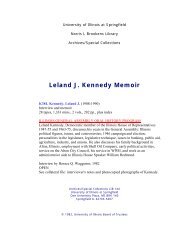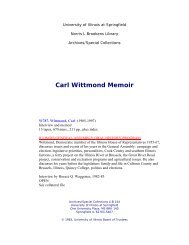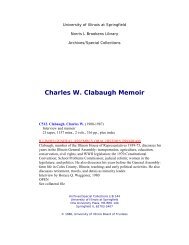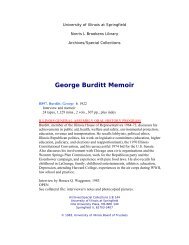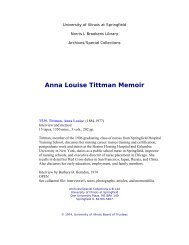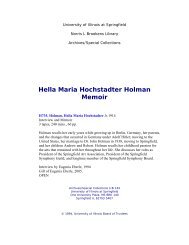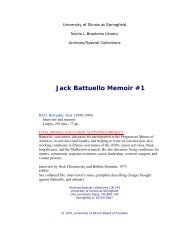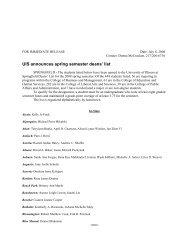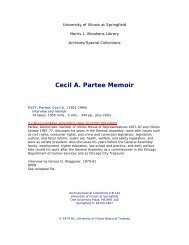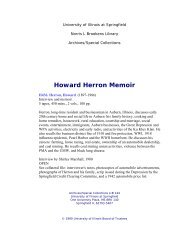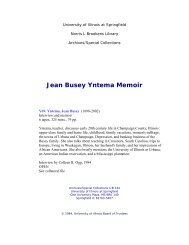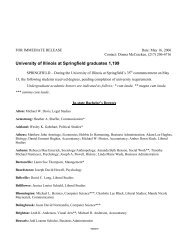STATEMENT OF FACTS - University of Illinois Springfield
STATEMENT OF FACTS - University of Illinois Springfield
STATEMENT OF FACTS - University of Illinois Springfield
Create successful ePaper yourself
Turn your PDF publications into a flip-book with our unique Google optimized e-Paper software.
take into account the recommendations <strong>of</strong> the National Resource Council when<br />
dealing with population subcultures because she did not think it was necessary<br />
in this case. (Vol. LXIII, R. 2584-87)<br />
After Halverson was not satisfied with her initial results, she went back and<br />
amplified a single loci, PEZ20 and got a fifth loci to match which is how she<br />
arrived at her final figure <strong>of</strong> 1 in 56,227. (Vol. LXIII, R. 2586-91) The data base<br />
for PEZ20 was limited to 94 pure bred dogs. The 1 in 56,227 would be for dogs<br />
randomly picked from California, Wyoming and Nevada and not Macon, Sullivan<br />
or Moultrie counties, <strong>Illinois</strong>. Halverson had no knowledge about the dog<br />
population in central <strong>Illinois</strong>. (Vol. LXIII, R. 2593-96)<br />
Defense Evidence<br />
Christopher Basten is a Research Associate Statistician at North Carolina<br />
State <strong>University</strong> conducting research in the area <strong>of</strong> statistical genetics. Dr. Basten<br />
examines genetic reports and arrives at a statistical estimation <strong>of</strong> the strength <strong>of</strong><br />
the evidence. (Vol. LXXI, R. 7) He has testified concerning canine DNA in four<br />
cases.<br />
Basten testified that by using a DNA data base you can estimate how <strong>of</strong>ten<br />
you would expect to see each type <strong>of</strong> allele. (Vol. LXXI, R. 9) He explained that<br />
the bigger the database the more accurate the estimate will be – usually a data<br />
base <strong>of</strong> 60 can generate good numbers. (Vol. LXXI, R. 9-10) There were 470 dogs<br />
represented in the Celera AgGen database and they were all purebred dogs. (Vol.<br />
LXXI, R. 24)<br />
There are different subgroups among canines and dogs within the same<br />
subgroup are more likely to be related and share more genes. This is especially<br />
true with the inbreeding <strong>of</strong> dogs. (Vol. LXXI, R. 10) In analyzing the Celera AgGen<br />
database he discovered that, within a certain breed, the dogs were highly<br />
-68



